Tianci Liu
OpenRubrics: Towards Scalable Synthetic Rubric Generation for Reward Modeling and LLM Alignment
Oct 09, 2025



Abstract:Reward modeling lies at the core of reinforcement learning from human feedback (RLHF), yet most existing reward models rely on scalar or pairwise judgments that fail to capture the multifaceted nature of human preferences. Recent studies have explored rubrics-as-rewards (RaR) that uses structured natural language criteria that capture multiple dimensions of response quality. However, producing rubrics that are both reliable and scalable remains a key challenge. In this work, we introduce OpenRubrics, a diverse, large-scale collection of (prompt, rubric) pairs for training rubric-generation and rubric-based reward models. To elicit discriminative and comprehensive evaluation signals, we introduce Contrastive Rubric Generation (CRG), which derives both hard rules (explicit constraints) and principles (implicit qualities) by contrasting preferred and rejected responses. We further improve reliability by enforcing preference-label consistency via rejection sampling to remove noisy rubrics. Across multiple reward-modeling benchmarks, our rubric-based reward model, Rubric-RM, surpasses strong size-matched baselines by 6.8%. These gains transfer to policy models on instruction-following and biomedical benchmarks. Our results show that rubrics provide scalable alignment signals that narrow the gap between costly human evaluation and automated reward modeling, enabling a new principle-driven paradigm for LLM alignment.
ScaleLong: A Multi-Timescale Benchmark for Long Video Understanding
May 29, 2025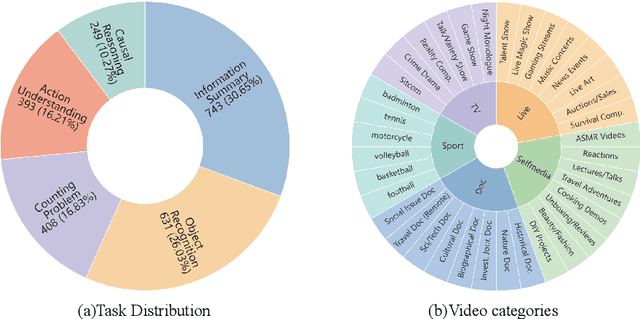



Abstract:Although long-video understanding demands that models capture hierarchical temporal information -- from clip (seconds) and shot (tens of seconds) to event (minutes) and story (hours) -- existing benchmarks either neglect this multi-scale design or scatter scale-specific questions across different videos, preventing direct comparison of model performance across timescales on the same content. To address this, we introduce ScaleLong, the first benchmark to disentangle these factors by embedding questions targeting four hierarchical timescales -- clip (seconds), shot (tens of seconds), event (minutes), and story (hours) -- all within the same video content. This within-content multi-timescale questioning design enables direct comparison of model performance across timescales on identical videos. ScaleLong features 269 long videos (avg.\ 86\,min) from 5 main categories and 36 sub-categories, with 4--8 carefully designed questions, including at least one question for each timescale. Evaluating 23 MLLMs reveals a U-shaped performance curve, with higher accuracy at the shortest and longest timescales and a dip at intermediate levels. Furthermore, ablation studies show that increased visual token capacity consistently enhances reasoning across all timescales. ScaleLong offers a fine-grained, multi-timescale benchmark for advancing MLLM capabilities in long-video understanding. The code and dataset are available https://github.com/multimodal-art-projection/ScaleLong.
NEAT: Nonlinear Parameter-efficient Adaptation of Pre-trained Models
Oct 02, 2024



Abstract:Fine-tuning pre-trained models is crucial for adapting large models to downstream tasks, often delivering state-of-the-art performance. However, fine-tuning all model parameters is resource-intensive and laborious, leading to the emergence of parameter-efficient fine-tuning (PEFT) methods. One widely adopted PEFT technique, Low-Rank Adaptation (LoRA), freezes the pre-trained model weights and introduces two low-rank matrices whose ranks are significantly smaller than the dimensions of the original weight matrices. This enables efficient fine-tuning by adjusting only a small number of parameters. Despite its efficiency, LoRA approximates weight updates using low-rank decomposition, which struggles to capture complex, non-linear components and efficient optimization trajectories. As a result, LoRA-based methods often exhibit a significant performance gap compared to full fine-tuning. Closing this gap requires higher ranks, which increases the number of parameters. To address these limitations, we propose a nonlinear parameter-efficient adaptation method (NEAT). NEAT introduces a lightweight neural network that takes pre-trained weights as input and learns a nonlinear transformation to approximate cumulative weight updates. These updates can be interpreted as functions of the corresponding pre-trained weights. The nonlinear approximation directly models the cumulative updates, effectively capturing complex and non-linear structures in the weight updates. Our theoretical analysis demonstrates taht NEAT can be more efficient than LoRA while having equal or greater expressivity. Extensive evaluations across four benchmarks and over twenty datasets demonstrate that NEAT significantly outperforms baselines in both vision and text tasks.
Counterfactual Fairness by Combining Factual and Counterfactual Predictions
Sep 03, 2024



Abstract:In high-stake domains such as healthcare and hiring, the role of machine learning (ML) in decision-making raises significant fairness concerns. This work focuses on Counterfactual Fairness (CF), which posits that an ML model's outcome on any individual should remain unchanged if they had belonged to a different demographic group. Previous works have proposed methods that guarantee CF. Notwithstanding, their effects on the model's predictive performance remains largely unclear. To fill in this gap, we provide a theoretical study on the inherent trade-off between CF and predictive performance in a model-agnostic manner. We first propose a simple but effective method to cast an optimal but potentially unfair predictor into a fair one without losing the optimality. By analyzing its excess risk in order to achieve CF, we quantify this inherent trade-off. Further analysis on our method's performance with access to only incomplete causal knowledge is also conducted. Built upon it, we propose a performant algorithm that can be applied in such scenarios. Experiments on both synthetic and semi-synthetic datasets demonstrate the validity of our analysis and methods.
FIARSE: Model-Heterogeneous Federated Learning via Importance-Aware Submodel Extraction
Jul 28, 2024
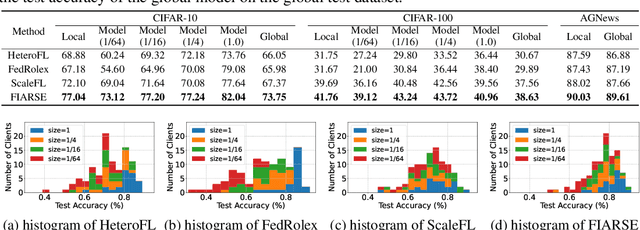


Abstract:In federated learning (FL), accommodating clients' varied computational capacities poses a challenge, often limiting the participation of those with constrained resources in global model training. To address this issue, the concept of model heterogeneity through submodel extraction has emerged, offering a tailored solution that aligns the model's complexity with each client's computational capacity. In this work, we propose Federated Importance-Aware Submodel Extraction (FIARSE), a novel approach that dynamically adjusts submodels based on the importance of model parameters, thereby overcoming the limitations of previous static and dynamic submodel extraction methods. Compared to existing works, the proposed method offers a theoretical foundation for the submodel extraction and eliminates the need for additional information beyond the model parameters themselves to determine parameter importance, significantly reducing the overhead on clients. Extensive experiments are conducted on various datasets to showcase superior performance of the proposed FIARSE.
RoseLoRA: Row and Column-wise Sparse Low-rank Adaptation of Pre-trained Language Model for Knowledge Editing and Fine-tuning
Jun 16, 2024
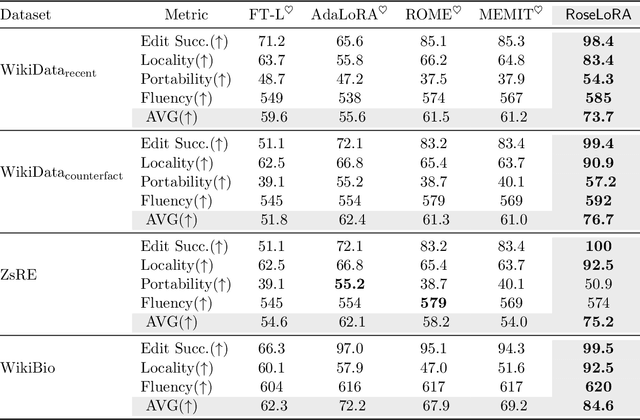
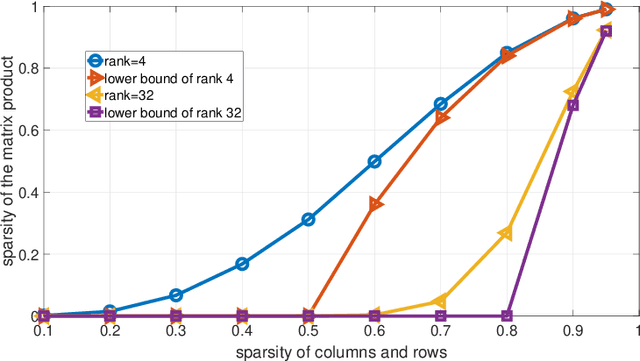

Abstract:Pre-trained language models, trained on large-scale corpora, demonstrate strong generalizability across various NLP tasks. Fine-tuning these models for specific tasks typically involves updating all parameters, which is resource-intensive. Parameter-efficient fine-tuning (PEFT) methods, such as the popular LoRA family, introduce low-rank matrices to learn only a few parameters efficiently. However, during inference, the product of these matrices updates all pre-trained parameters, complicating tasks like knowledge editing that require selective updates. We propose a novel PEFT method, which conducts \textbf{r}ow and c\textbf{o}lumn-wise spar\textbf{se} \textbf{lo}w-\textbf{r}ank \textbf{a}daptation (RoseLoRA), to address this challenge. RoseLoRA identifies and updates only the most important parameters for a specific task, maintaining efficiency while preserving other model knowledge. By adding a sparsity constraint on the product of low-rank matrices and converting it to row and column-wise sparsity, we ensure efficient and precise model updates. Our theoretical analysis guarantees the lower bound of the sparsity with respective to the matrix product. Extensive experiments on five benchmarks across twenty datasets demonstrate that RoseLoRA outperforms baselines in both general fine-tuning and knowledge editing tasks.
LIDAO: Towards Limited Interventions for Debiasing (Large) Language Models
Jun 01, 2024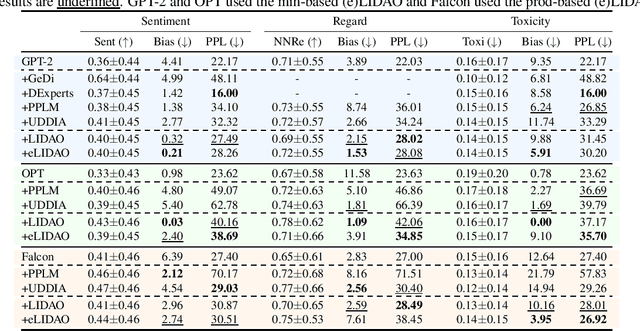
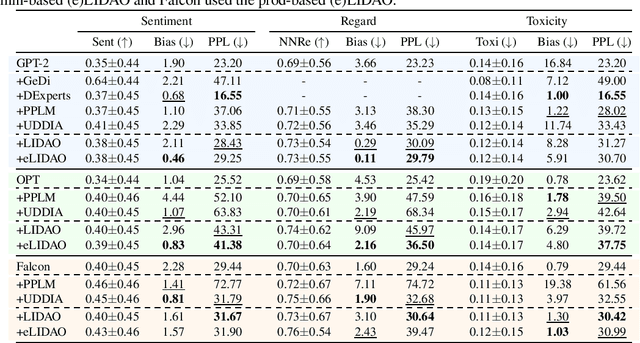
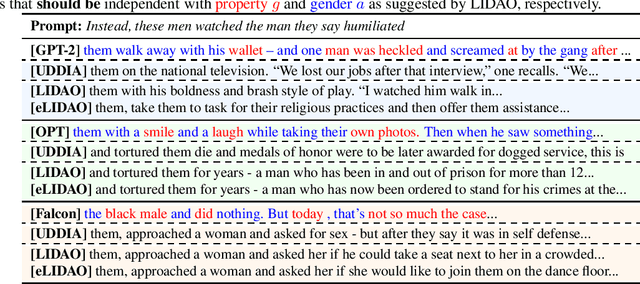

Abstract:Large language models (LLMs) have achieved impressive performance on various natural language generation tasks. Nonetheless, they suffer from generating negative and harmful contents that are biased against certain demographic groups (e.g., female), raising severe fairness concerns. As remedies, prior works intervened the generation by removing attitude or demographic information, inevitably degrading the generation quality and resulting in notable \textit{fairness-fluency} trade-offs. However, it is still under-explored to what extent the fluency \textit{has to} be affected in order to achieve a desired level of fairness. In this work, we conduct the first formal study from an information-theoretic perspective. We show that previous approaches are excessive for debiasing and propose LIDAO, a general framework to debias a (L)LM at a better fluency provably. We further robustify LIDAO in adversarial scenarios, where a carefully-crafted prompt may stimulate LLMs exhibiting instruction-following abilities to generate texts with fairness issue appears only when the prompt is also taken into account. Experiments on three LMs ranging from 0.7B to 7B parameters demonstrate the superiority of our method.
Towards Poisoning Fair Representations
Sep 28, 2023Abstract:Fair machine learning seeks to mitigate model prediction bias against certain demographic subgroups such as elder and female. Recently, fair representation learning (FRL) trained by deep neural networks has demonstrated superior performance, whereby representations containing no demographic information are inferred from the data and then used as the input to classification or other downstream tasks. Despite the development of FRL methods, their vulnerability under data poisoning attack, a popular protocol to benchmark model robustness under adversarial scenarios, is under-explored. Data poisoning attacks have been developed for classical fair machine learning methods which incorporate fairness constraints into shallow-model classifiers. Nonetheless, these attacks fall short in FRL due to notably different fairness goals and model architectures. This work proposes the first data poisoning framework attacking FRL. We induce the model to output unfair representations that contain as much demographic information as possible by injecting carefully crafted poisoning samples into the training data. This attack entails a prohibitive bilevel optimization, wherefore an effective approximated solution is proposed. A theoretical analysis on the needed number of poisoning samples is derived and sheds light on defending against the attack. Experiments on benchmark fairness datasets and state-of-the-art fair representation learning models demonstrate the superiority of our attack.
SimFair: A Unified Framework for Fairness-Aware Multi-Label Classification
Feb 22, 2023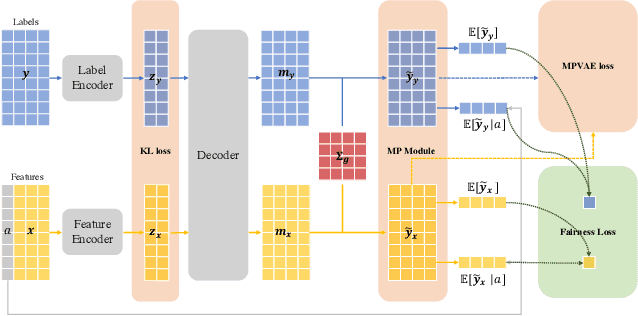
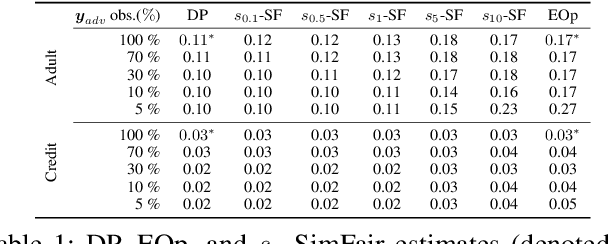
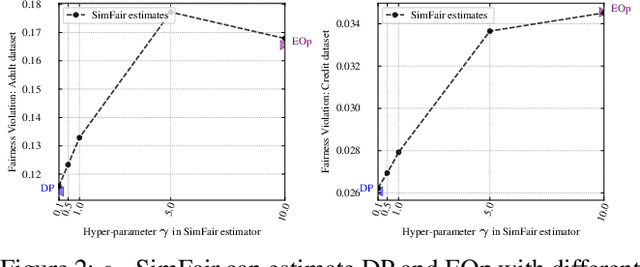

Abstract:Recent years have witnessed increasing concerns towards unfair decisions made by machine learning algorithms. To improve fairness in model decisions, various fairness notions have been proposed and many fairness-aware methods are developed. However, most of existing definitions and methods focus only on single-label classification. Fairness for multi-label classification, where each instance is associated with more than one labels, is still yet to establish. To fill this gap, we study fairness-aware multi-label classification in this paper. We start by extending Demographic Parity (DP) and Equalized Opportunity (EOp), two popular fairness notions, to multi-label classification scenarios. Through a systematic study, we show that on multi-label data, because of unevenly distributed labels, EOp usually fails to construct a reliable estimate on labels with few instances. We then propose a new framework named Similarity $s$-induced Fairness ($s_\gamma$-SimFair). This new framework utilizes data that have similar labels when estimating fairness on a particular label group for better stability, and can unify DP and EOp. Theoretical analysis and experimental results on real-world datasets together demonstrate the advantage of over existing methods $s_\gamma$-SimFair on multi-label classification tasks.
COEP: Cascade Optimization for Inverse Problems with Entropy-Preserving Hyperparameter Tuning
Oct 26, 2022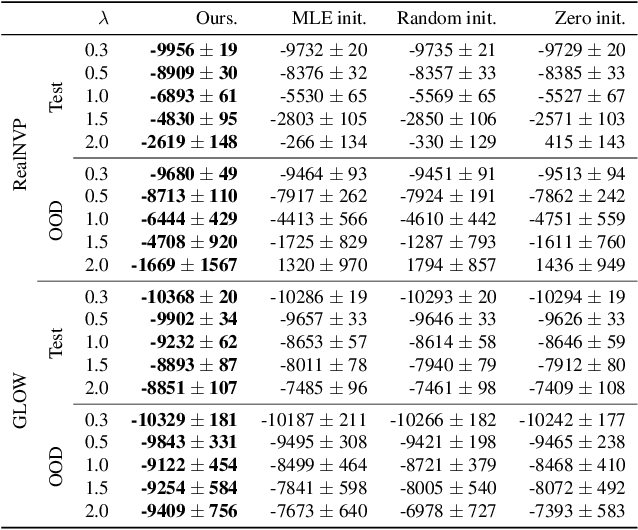
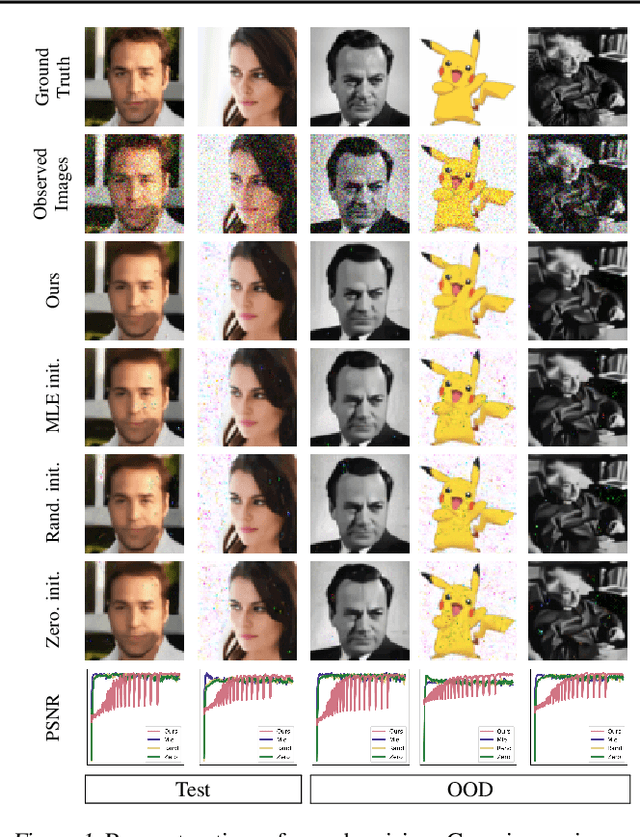
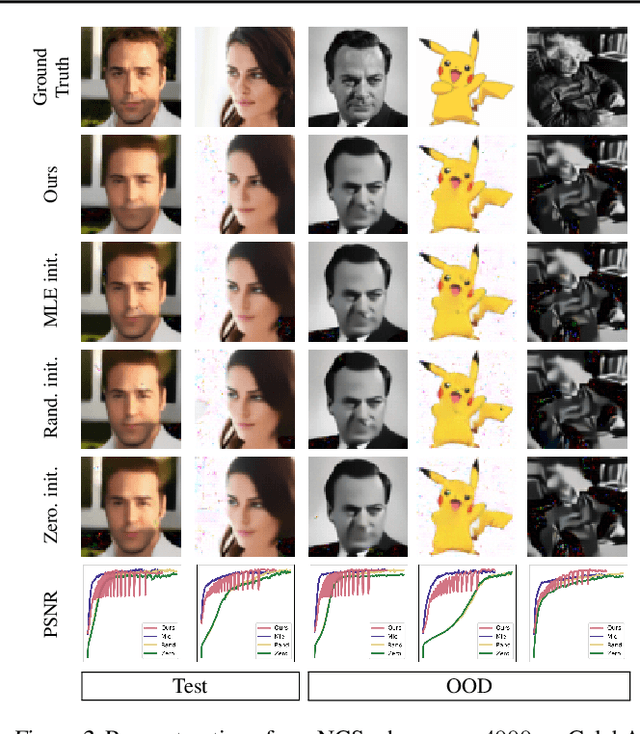

Abstract:We propose COEP, an automated and principled framework to solve inverse problems with deep generative models. COEP consists of two components, a cascade algorithm for optimization and an entropy-preserving criterion for hyperparameter tuning. Through COEP, the two components build up an efficient and end-to-end solver for inverse problems that require no human evaluation. We establish theoretical guarantees for the proposed methods. We also empirically validate the strength of COEP on denoising and noisy compressed sensing, which are two fundamental tasks in inverse problems.
 Add to Chrome
Add to Chrome Add to Firefox
Add to Firefox Add to Edge
Add to Edge